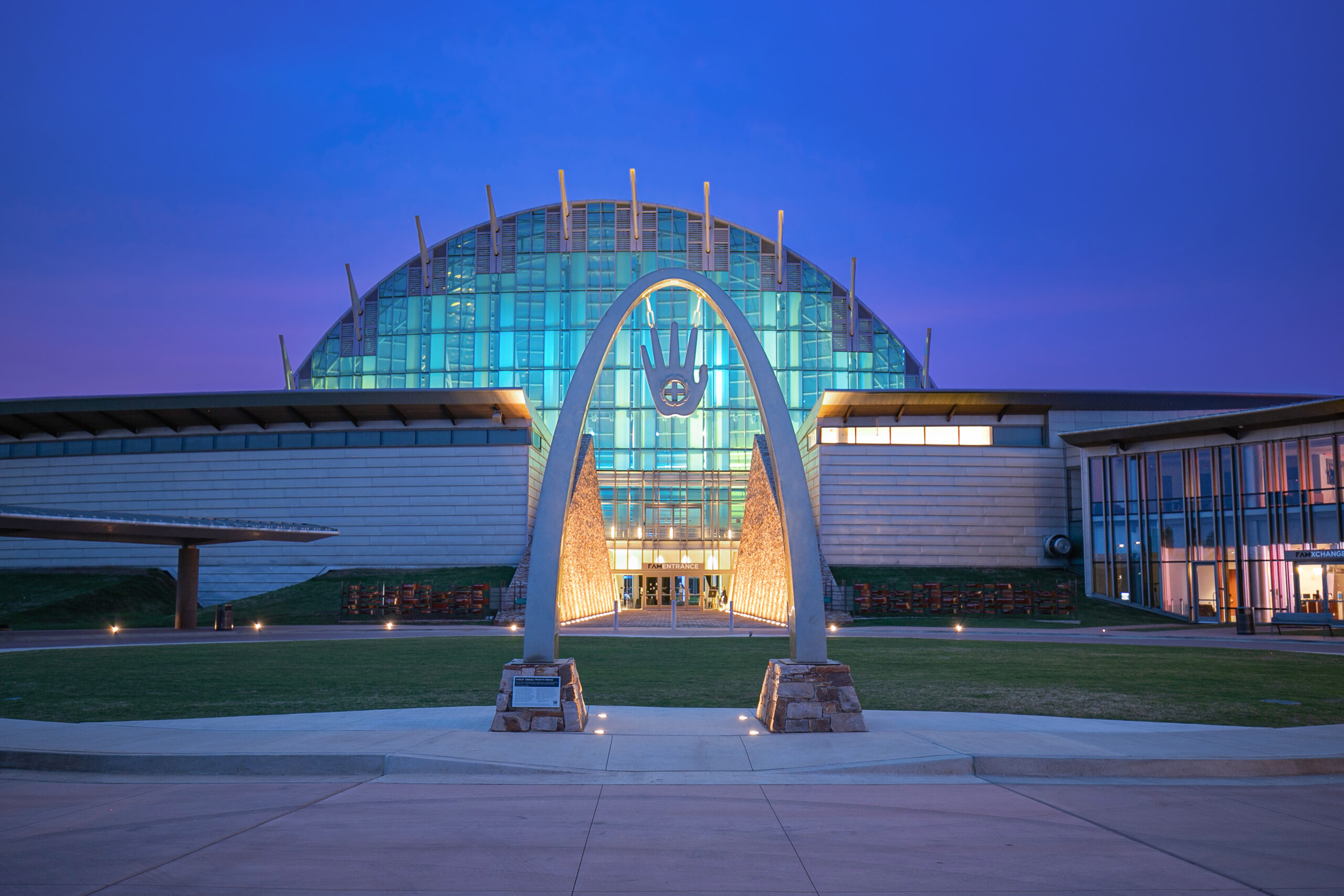Tip your ten-gallon to the First Americans Museum in Oklahoma City—a Sooner not later cultural experience.
Written by Jenn Thornton
A building of both symbolism and storytelling, First Americans Museum (FAM) is high on the greatest hits in Oklahoma. A world-class institution and cultural center, the museum is dedicated to spotlighting the 39 distinct tribal nations in the Sooner State today. Only a handful of these tribal nations are indigenous to what is now the state of Oklahoma; all others were removed from their ancestral homelands across the contiguous United States to Indian Territory. All of them, however, are front and center at FAM.
The 175,000-square-foot glass-and-steel structure is a monumental homage to tribal traditions. A “building of the earth,” as described by project architect Johnson Fain, working in collaboration with local firm Hornbeek Blatt, “it is integrated into a large rising spiral mound at the heart of the site.” This is significant, as the circle is a spiritual symbol representing continuousness, the cycle of life, to Native peoples. There is no better place to consider, and perhaps reconsider, Oklahoma’s tribal nations and Indigenous history as a whole.
The journey begins on approach of the museum, where visitors encounter “Touch to Above,” a stop-you-in-your-tracks stainless steel sculpture by Cherokee artists Demos Glass and Bill Glass. It continues in staggering fashion with two circles intersecting at the magisterial Hall of People, a soaring glass dome that reinterprets grass houses of the Wichita and Caddo communities. Then come the galleries…
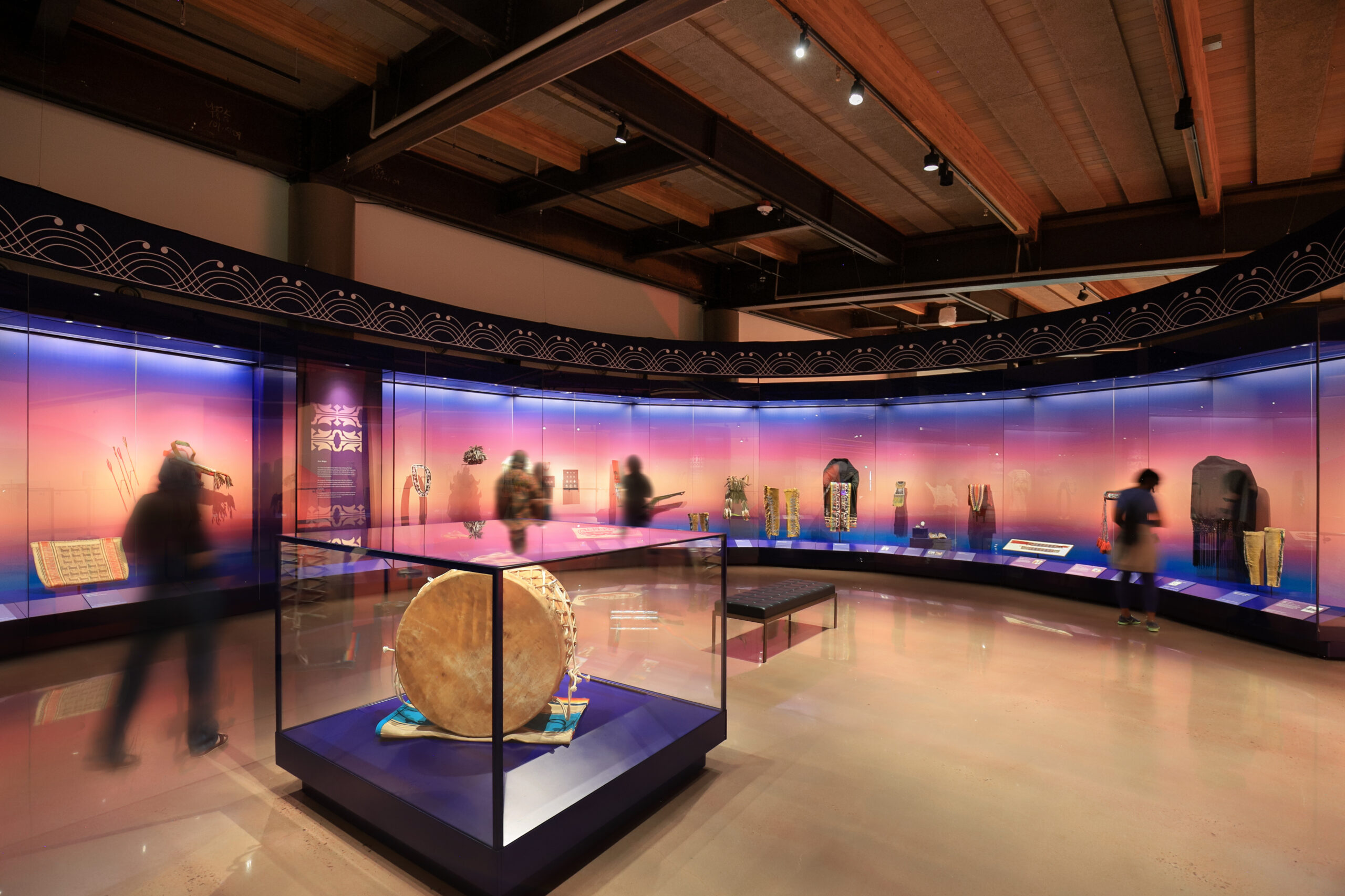
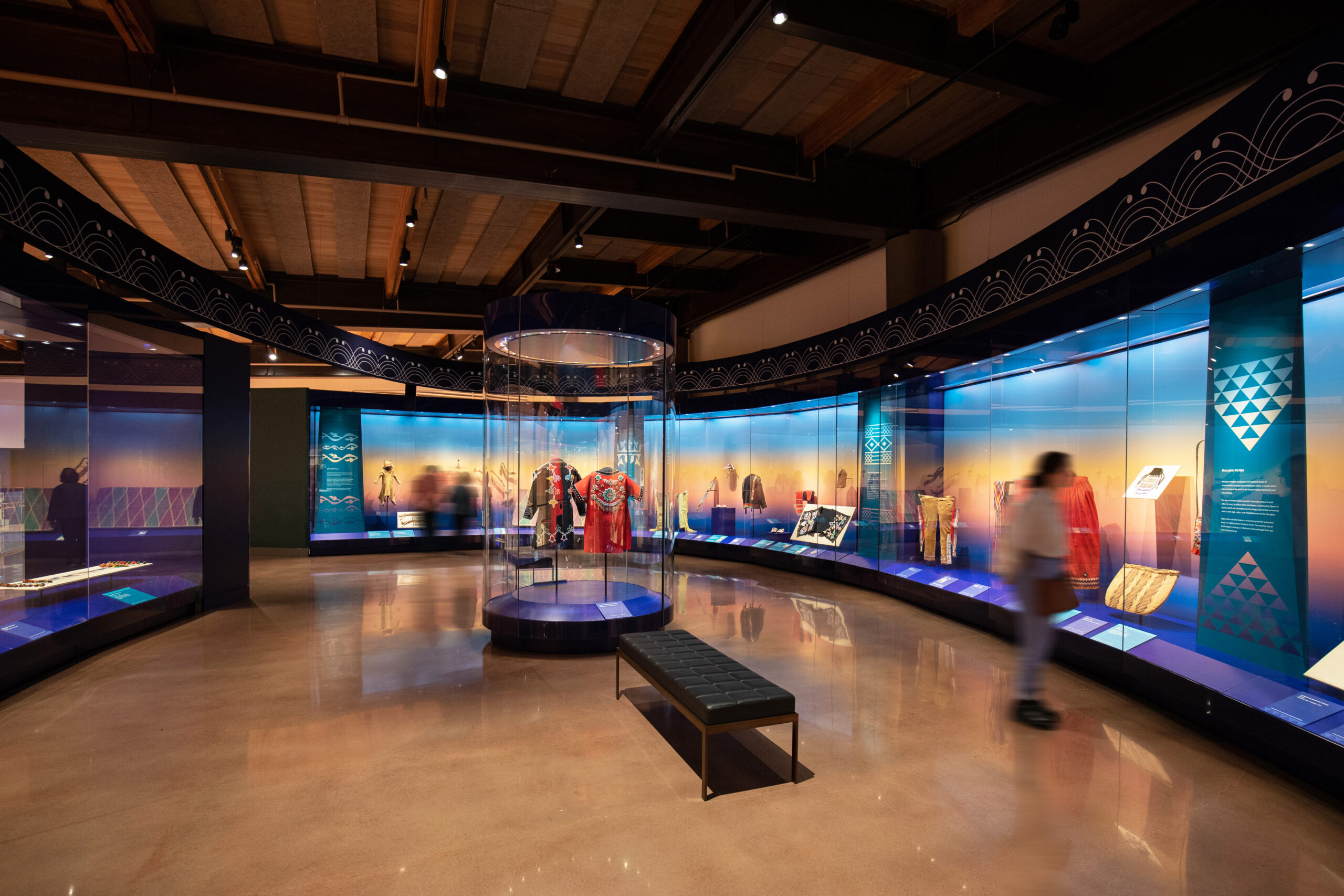
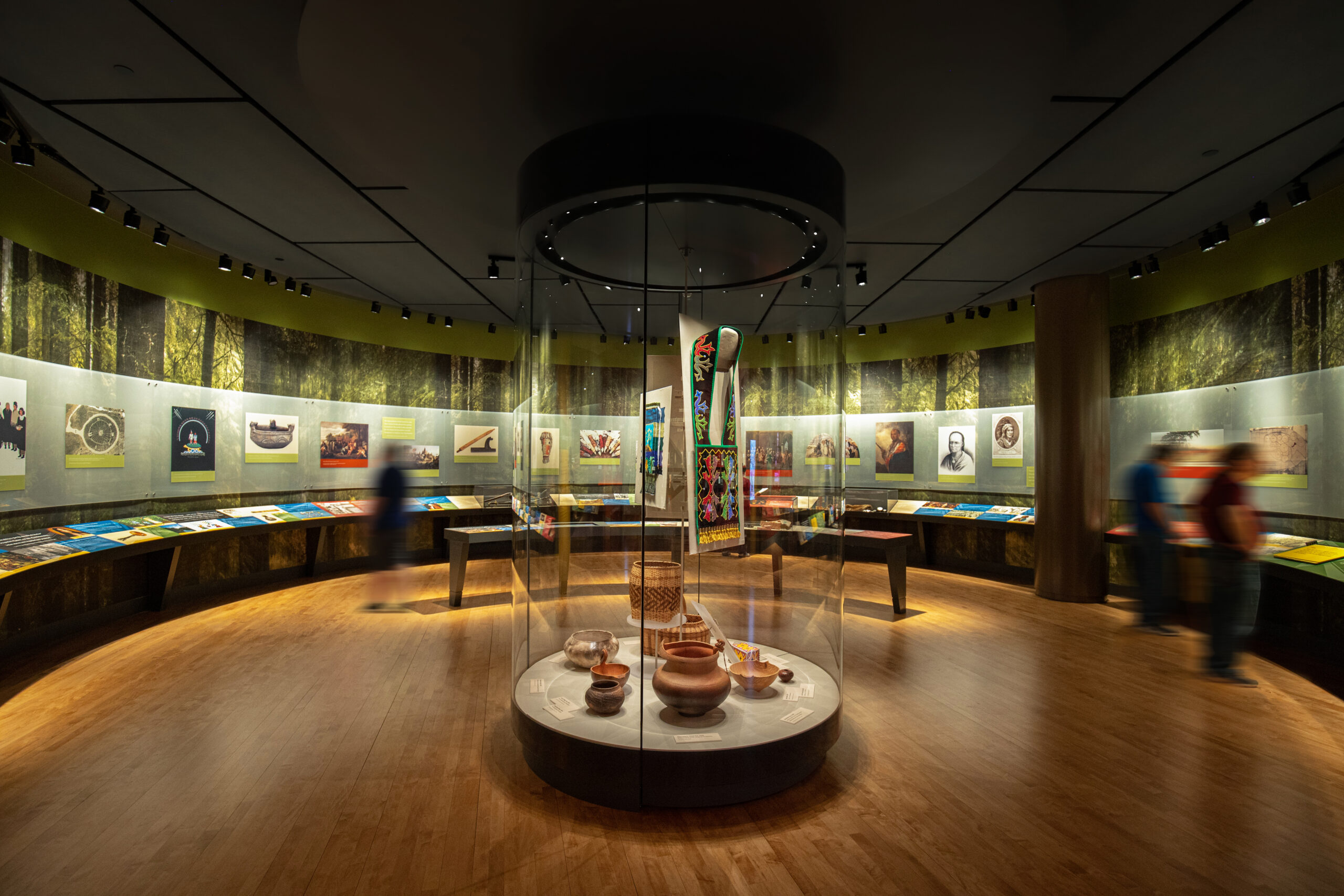
FAM’s signature exhibit is OKLA HOMMA (the state of Oklahoma takes its name from these two Choctaw words). Expect an immersive, media-rich environment designed to showcase—quite spectacularly—tribal origin stories and first-person historical accounts from a Native POV. All aspects of Native life are covered, from Indigenous cultural lifeways, to sports and games, to the role of warriors in Native communities. As vast as the Plains, the collection includes newly commissioned objects and also features14 FAM-specific films, audio projects and more, making this exhibit as remarkable as the building that houses it. Created in the same spirit, OKLA HOMMA details the most painful chapters of the Oklahoma tribes, as it must if to tell a complete and accurate history, but it also shows their fierce determination, pride, and resiliency and survival.
It may have taken more than three decades to get this “of the Earth” work off the ground, but now, a little more than a year after its multi-day grand opening with representation from every Oklahoma tribe, FAM has already established itself as an Oklahoma City landmark with vibrant—and vital—exhibits and programming. Take note travelers: FAM has partnered with the National Cowboy & Western Heritage Museum—another Oklahoma City institution where In Old Oklahoma star John Wayne is featured alongside other mythical cowboys in the Western Performers Gallery—to offer a two-for-one joint ticket to visits both museums.
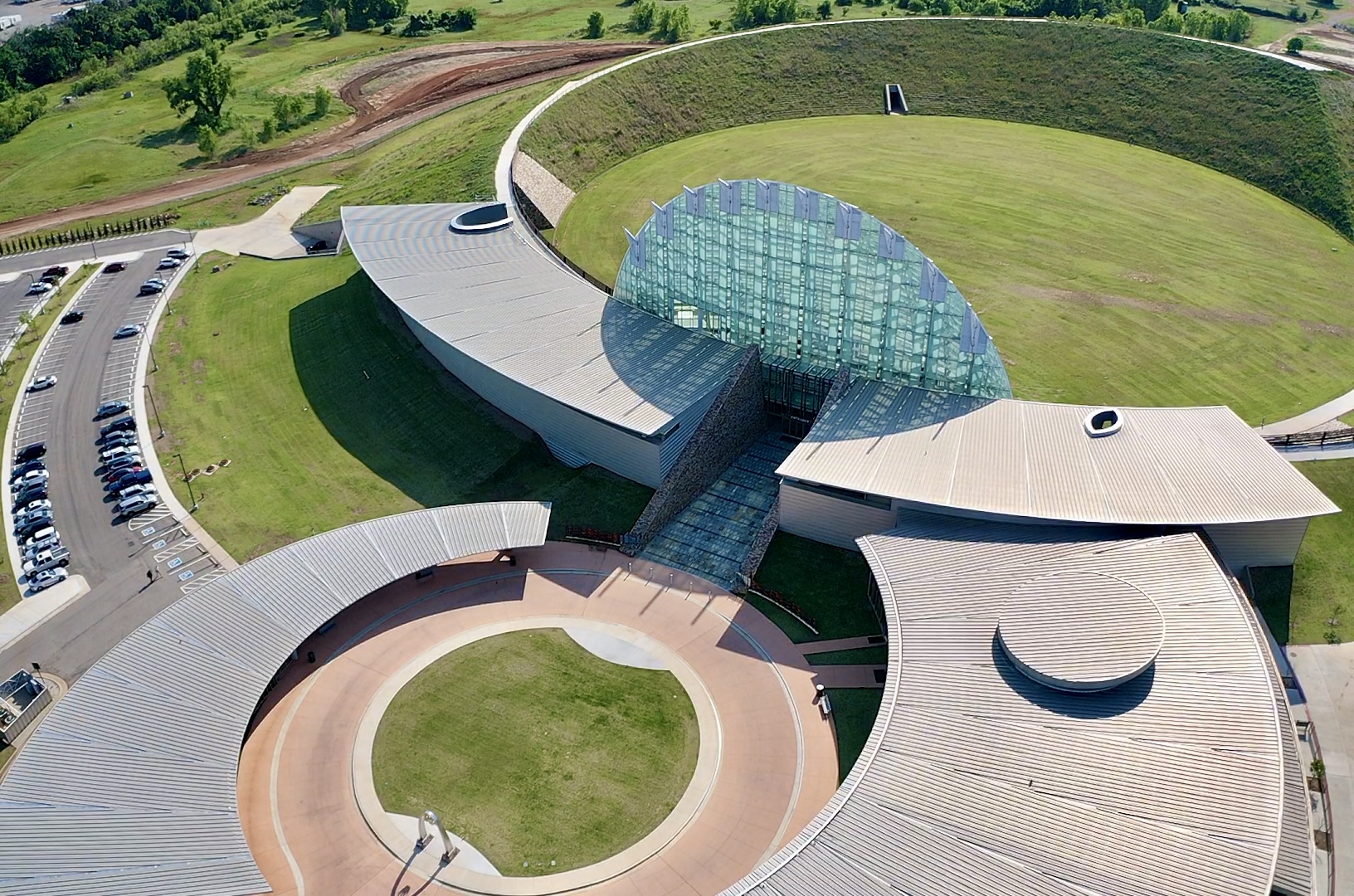
Photos: Ryan Linton
